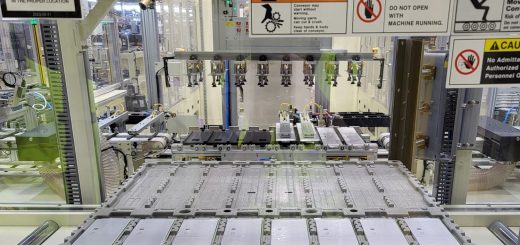
General Motors has officially withdrawn its $14.4 billion request for a U.S. Department of Energy (DOE) loan it submitted back in October of 2009. Citing reasons as to why the company decided against the loan, GM CFO Chuck Chris Liddell stated that the company is confident in its current global business performance and that the decision to forgo the funds is consistent with the automaker’s goal of keeping minimal debt on its balance sheet. He also stated in a press release that turning down the request will not slow down The General’s plan of bringing new vehicles and technology to market.














Comments
The glut of articles that came out this week about how GM & Chrysler had “Fixed” the ATVM loan for themselves seems to have put too much scrutiny on GM and further review would have tracked back to the dirty-secrets of who they bribed in Washington to get a private slush fund just for themselves at taxpayer and competitor expense. Nissan caught them and so they got some of the money too, making it Slush money AND Hush Money. No company would walk away from $14B that they are a shoe-in for unless they realized that deeper investigations would bring them to their knees and link all of the payoffs and “special dinners” together. Rattner, the guy at the White House who ran the car money is now facing criminal charges. The DOE staff that worked on it have been fired or “forcibly migrated” and all are under investigation by the Republicans who hated the Detroit deals and law enforcement. The big crime is all coming apart at the seams. You-know-what rolls downhill and Rattner started the heap unraveling.
FROM THE TRUTH ABOUT CARS:
The Department of Energy’s $25b Advanced Technology Vehicle Manufacturing Loan program was very nearly used as a slush fund to keep GM and Chrysler afloat during the dangerous days leading up to the federal auto bailout. Though President Bush’s decision to use TARP to rescue America’s failing automakers took away the need to tap the so-called “retooling loan” program to fund America’s auto bailout, that decision also contributed to a long delay in the allocation of the ATVM loans. Because the loans require applicants prove “financial viability,” GM and Chrysler’s requests (which account for $17.4b out of the remaining pool of $16.7b in non-allocated loans) have been on hold, and with them, every other automaker still seeking approval for its requests. And now, with no word from the DOE on the loan program since last April, congress is agitating for the DOE to make with the loans already. Senator Diane Feinstein captures the frustration in a letter published by the Detroit News
“On multiple occasions, the department has missed internal deadlines for initial decisions, term negotiations, final decisions and loan closure,” she wrote, saying the department failed to give applicants “a clear timeline.”
But did the DOE miss deadlines and string automakers along out of negligence, or because it had to wait in order to fulfill the loan program’s mission, namely supporting the bailed-out automakers?
This question doesn’t have an easy answer: after all, few in the private sector expect rapid action from governmental bureaucracies. The slow allocation of federal loans really shouldn’t come as a surprise to anyone. At the same time, the ATVM program has been in place since 2008, and automakers like Ford, Nissan, Tesla and Fisker have jointly received some $8.3b for programs ranging from Tesla and Fisker’s EV luxury car projects to Nissan’s Leaf and more fuel-efficient versions of Ford’s mass-market models. If the DOE could approve billions for non-bailed-out automakers, surely there is nothing out of the ordinary going on with the DOE’s bureaucracy. Curious minds must, therefore, look to pending requests for an explanation of their delay.
And those requests tell an interesting story. With $8.3b of the program’s loans already spent, GM’s $14.4b request would, if approved, soak up nearly all remaining funds. In response to both this reality and Fiat’s changes to Chrysler’s efficiency priorities, the Pentastar has reduced its loan request from $8.55b to “around $3b.” Had Chrysler not made its request reduction, the two bailed-out automakers would have accounted for all but $1b of the retooling loan program’s funds. Even with that reduction, Chrysler and GM’s outstanding requests amount to some $700m more than the program has left to give out… and that’s not counting the smaller firms still hoping for a piece of the pie, including ZAP, ALTe, Aptera, Coda and more. Or the fact that
because the costs have been higher than expected, the Energy Department won’t be able to loan the entire $25 billion, Sen. Debbie Stabenow, D-Lansing, said. Auto executives say the agency may only be able to loan another $10 billion.
The fact that GM and Chrysler are requesting every remaining penny in the ATVM program, combined with delays to the payout of remaining funds sends a fairly unambiguous message: the remaining ATVM money will all be going to GM and Chrysler. Though initial delays to paying out ATVM money to GM and Chrysler were due to the program’s “viability” clause, those concerns were (in theory) circumvented by bailing out those two companies. More recently, GM’s request was “suspended” while it entered the IPO process, an issue that could now be holding up Chrysler’s request. Another concern could be political: with the bailouts still a divisive issue with the American people, the White House may be seeking to delay giving the automakers it owns the rest of the ATVM money as a way of avoiding accusations of political favoritism.